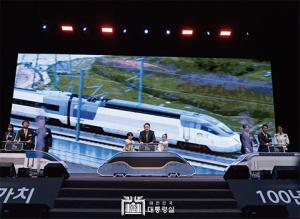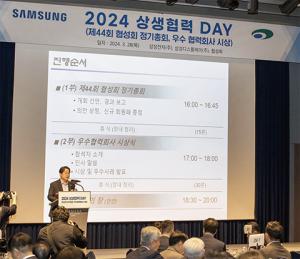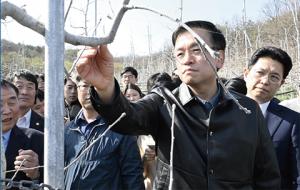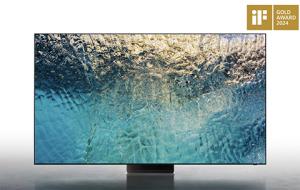 |
||
| ▲ 한희원 미술관 한희원 작가 | ||
2017년 올해의 관광도시로 선정된 광주광역시 남구에는 100년의 시간을 간직한 양림동이 있다. 양림동은 20세기 초 이른바 '서양촌'으로 불릴 정도로 수많은 외국 선교사들이 정착하며 남긴 흔적과 호남의 많은 문화예술가가 거쳐 간 근대문화마을이다. 또한 대한민국의 근대화시기에 광주의 민족정신이 뿌리내린 곳이기도 하다.
양림동은 문화와 예술의 마을
한희원 미술관. 차 한 잔의 여유와 예술의 낭만을 느끼다
광주시 양림동은 근대 역사를 고스란히 간직하고 있으며, 마을 전체가 하나의 근대문화 체험관이라고 볼 수 있다. 양림동 오거리에서 이장우 가옥을 지나 최승효 가옥으로 가는 골몰길인 양촌길에 위치한 고택, 한희원 미술관에서는 차 한 잔의 여유와, 예술의 낭만을 오롯이 느낄 수 있다. 한희원 미술관의 한희원 작가는 “양림동은 문화와 예술의 마을입니다. 수많은 문인들과 화가들이 광주 양림동을 거쳐 갔어요.”라고 전한다. 대표적으로 시인 김현승, 이수복과 화가 배동신, 황영성과 ‘젊은이의 양지’와 ‘첫사랑’의 TV드라마 작가 조소혜씨 또한 광주 양림동에서 활동했던 작가들이다. 한희원 작가는 이들과 함께 어울리며 모든 학창시절을 양림동에서 보냈다. 한희원 작가에게 양림동은 고향이고, 정신적인 토대를 닦은 곳이며 한 작가의 뿌리를 이루는 곳이다. 한희원 작가가 조선대학교 미술교육학과를 다니던 시절 광주시는 대한민국 민주화의 선봉지였다. 한희원 작가는 “1978년 시국선언 이후 급변하던 세상의 현실과 예술세계 사이에서 많은 갈등을 겪었습니다.”라고 전했다. 이는 곧 한희원 작가의 민중적인 예술 활동으로 이어진다.
추억으로 만든 한희원 미술관
광주시 양림동의 광광명소가 되다
한희원 작가는 대학을 졸업하고 군대를 다녀온 후 순천에 있는 고등학교에 재직하며, 소외받는 이들을 찾아가서 민초들의 삶을 그려내며 민중적인 예술 활동을 펼친다. “당시 미술계의 활동들은 모두 서울에 집중되어 있었습니다. 저는 광양, 순천, 화개장터 등 시골의 장터를 찾아 민중들의 작품을 전시했습니다. 장터 안에서 소박한 삶을 살아가던 이들과의 특별한 교감을 하는 살아있는 전시였습니다.” 이후 한 작가는 다시 광주로 돌아와서 예술 활동을 시작하고 1990년대 그의 작품은 삶이 스며든 서정적인 그림으로 회귀한다. 이 시기의 대표적인 작품이 <여수로가는막차> 이다. 한 작가의 그림은 매우 서정적이고 시적인 그림으로 내면의 이야기를 전한다. 시인이기도 한 한희원 작가의 작품은 시와 그림의 영역을 넘나든다. 한희원 작가가 ‘그림 그리는 시인’으로 불리는 이유이다. 한희원 작가는 결국 2015년 양림동에 대한 애착으로 양림동에 작은 고택을 구입해서 자신의 이름을 딴 한희원 미술관을 개관했다. 한희원 작가는 “양림동의 역사를 지키고 기념하고 싶습니다. 한희원 미술관은 추억으로 만든 미술관입니다.” 라고 전한다. 현재 한희원 미술관은 광주 양림동을 찾는 관광객들의 명소가 되었다. 이장우 가옥에서 최승효 가옥, 한희원미술관으로 이어지는 좁은 골목은 양림길 여정의 백미라 할 만 하다. 한희원 작가는 마지막으로 “양림동에 대한 역사 박물관과 인물기념관이 지어진 것이 저의 소망입니다. 무분별한 개발속에서 양림동을 지키는데 힘이 되고 싶습니다.” 라고 전했다.
“Come and stroll around the quiet roads in Yangnim-dong and rest your feet over a tea at Han Hee Won Gallery this spring!”
Artist Han Hee-won of Han Hee Won Gallery
Han Hee Won Gallery is located in Yangnim-dong, Nam-gu, Gwangju. The village once was called as a village of westerns since missionaries lived in that area in early 20th century. The village also maintains the modern history of the city and one might say that the village itself is an experience hall of the modern history in the region. When in the village, pass the house of Lee Jang-woo that leads toward the house of Choi Seung-hyo. When you reach to Yangchon-gil, you can see Han Hee Won Gallery and there you are recommended to rest your feet over a tea. “Yangnim-dong is a village of culture and art as many writers and artists once stayed or lived in the village in their course of career” proudly says Han. In fact, poet Kim Hyun-seung, artist Bae Dong-shin and drama writer Jo So-hey who wrote ‘Our Sunny Days of Youth’ and ‘First Love’ once lived in the village. Han spent all his school years in Yangnim-dong and shared a time with them. Han majored in art education at Chosun University and engaged in the democratic movement in the year 1987. It was only natural that his art represents the lives of common people. “The difference I made, however, was that I mainly drew the people living in the provinces since I worked as a teacher at a high school in Suncheon.” After years of his communication with people in the rural villages, Han moved back to Gwangju in the 90s and changed his style to emphasizing lyrical elements while the lives of the common people still intact. <The Last Train to Yeosu> is a representative work during this period. The work is lyrical and poetic and Han delivers his inner story onto the canvas. In 2015, he bought an old house in Yangnim-dong and turned it to the current Han Hee Won Gallery. The gallery rapidly has become a landmark of the city over the village where many visitors wish to swing by. If you are planning a journey this spring, Han Hee Won Gallery might be a good option for you to stroll by.
Note: <Power Korea> “rewrites” the Korean article in English “concisely” for native English speakers and staff of foreign missions in Korea.
신태섭 기자 tss79@naver.com







